Some punishments for dogs are so cruel, they don’t just break their spirits—they tarnish the human-animal bond.
From choke chains to harsh physical corrections, it’s time we recognize that these outdated practices have no place in a world that should be built on compassion.
Imagine a dog trembling in fear, punished for simply being themselves.
We can do better than this.
Gone are the days when punishment was the go-to method. There’s no excuse for treating dogs like misbehaving machines. This list highlights 21 cruel methods that should be buried in history, never to be repeated again.
Let’s rewrite the story of how we treat our pets—one based on love, patience, and respect. No more fear-driven training. Just healthy, happy dogs with wagging tails and trust in their owners.
Hitting with Newspaper

Using a newspaper to hit dogs was once a common disciplinary method. People believed it was a harmless way to correct bad behavior. However, this method can instill fear and anxiety in dogs. Beyond the immediate impact, it damages the trust between a pet and its owner. Dogs thrive on positive reinforcement, not fear-based tactics. Consider using reward-based training instead. This fosters a stronger bond and encourages good behavior through understanding and patience.
Chaining Dogs Outside
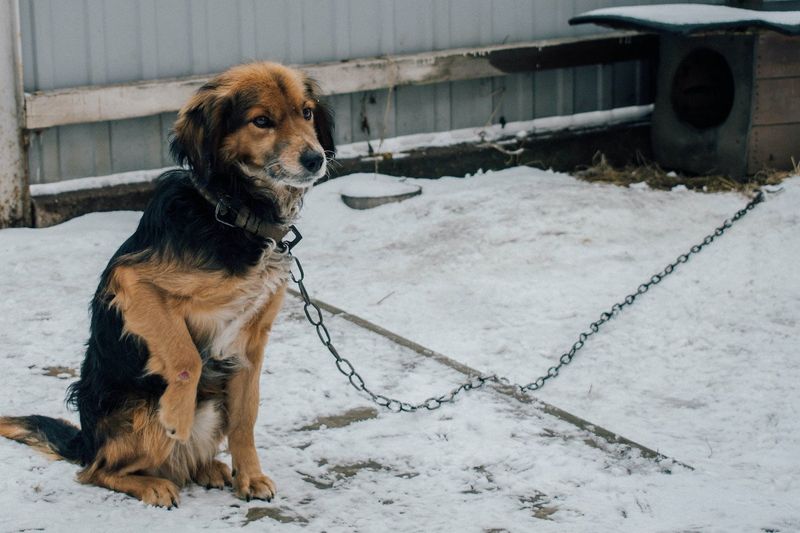
Chaining dogs outside as a means of confinement is outdated and cruel. It restricts their movement and exposes them to harsh weather. Dogs are social animals and need regular interaction and exercise. Isolation can lead to behavioral issues and anxiety. Instead, provide a secure, spacious yard or regular walks to meet their physical and social needs. Consider investing in a sturdy fence to allow supervised freedom. This approach supports their well-being and happiness.
Using Shock Collars

Shock collars are controversial tools intended to deter unwanted behaviors. While they may produce quick results, they inflict pain and fear, potentially causing long-term psychological harm. Positive reinforcement techniques are more effective and humane. Training should be about building trust and communication, not instilling fear. Engage in activities that reward good behavior, making learning enjoyable. This cultivates a loving relationship and promotes better behavior naturally.
Scruffing

Scruffing involves grabbing a dog by the loose skin at the back of its neck. While mother dogs may carry puppies this way, it’s not suitable for adult dogs. Scruffing can cause discomfort and fear, leading to a breakdown in trust. Instead, focus on positive reinforcement and gentle handling. Aim to create a calm environment where the dog feels safe and respected. This encourages cooperative behavior and strengthens the human-animal bond.
Alpha Rolling
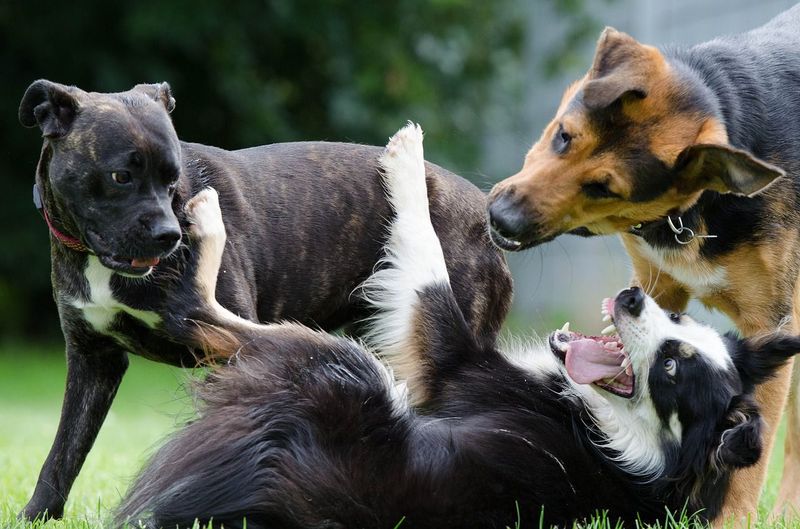
Alpha rolling involves forcing a dog onto its back to establish dominance. This method is based on outdated wolf pack theories. It can induce fear and aggression rather than respect. Dogs respond better to leadership through guidance and encouragement. Foster a cooperative relationship by setting clear boundaries and using rewards for good behavior. This promotes understanding and respect without fear, creating a harmonious living situation for both dog and owner.
Kicking

Kicking is an unacceptable form of punishment that causes physical harm and psychological trauma. It’s not only cruel but also ineffective, as it breaks down trust and instills fear. Dogs learn best through positive reinforcement and patience. Encourage good behavior with treats, praise, and affection. Building a relationship based on trust and respect fosters a positive and loving environment. This approach leads to a happier, more well-behaved pet.
Ignoring Crying Puppies

Ignoring a crying puppy is often recommended to discourage attention-seeking behavior. However, it can cause anxiety and distress. Puppies cry for valid reasons, like needing comfort or a bathroom break. Address their needs promptly to build trust. Establish a routine to help them feel secure and reduce crying over time. Positive attention when they’re calm teaches them that being quiet brings rewards, fostering a peaceful and happy home.
Withholding Food

Withholding food as punishment deprives a dog of essential nutrients and can lead to health problems. It creates anxiety around feeding times and damages the human-animal bond. Instead, maintain a consistent feeding schedule and use mealtimes as opportunities for training with treats and praise. This reinforces positive behavior and trust. A well-fed and content dog is more likely to be obedient and happy.
Tethering During Storms
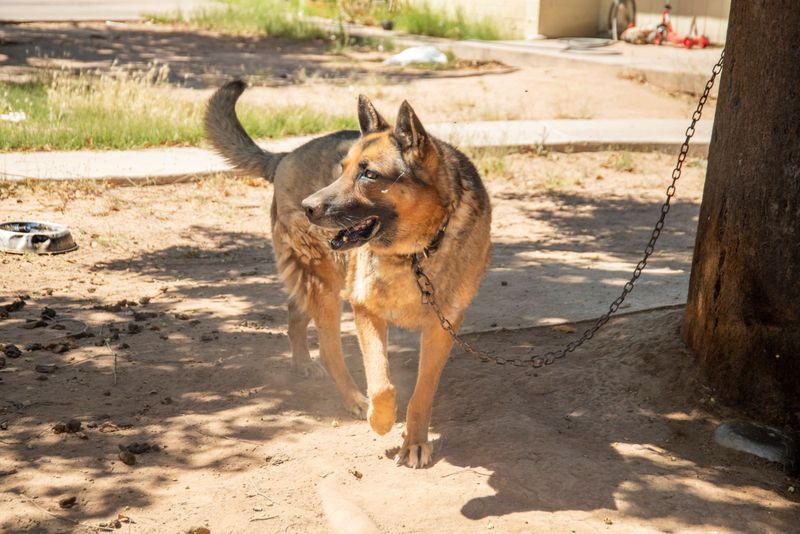
Tethering a dog during storms can be terrifying for them. The noise and chaos cause fear, and restraint prevents them from seeking comfort. Dogs need to feel safe during such events. Create a calming environment indoors with soothing music or a designated safe space. Comfort and reassurance from their owner help alleviate anxiety, promoting a sense of security. This approach ensures their well-being during stressful weather events.
Water Spraying
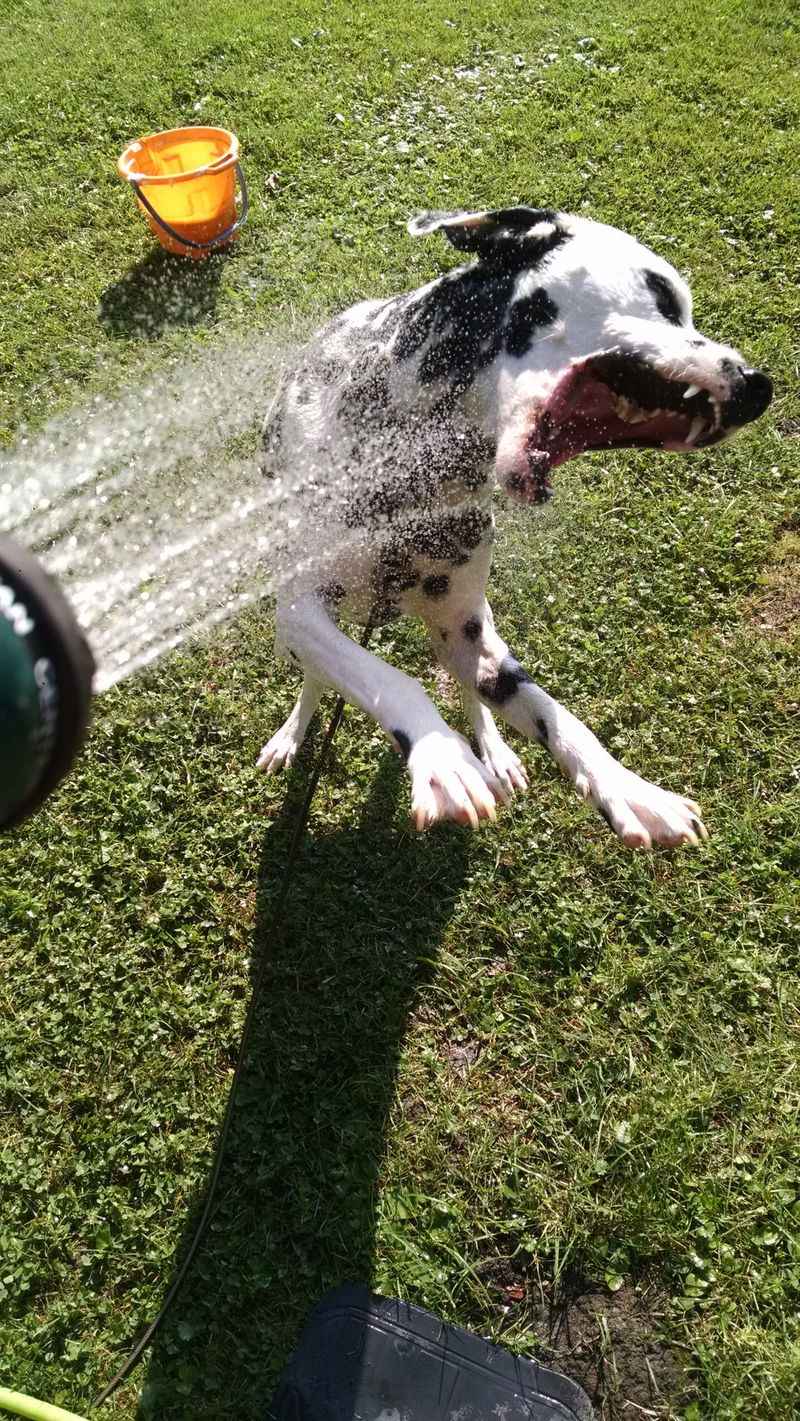
Spraying water at a misbehaving dog is a widely used but ineffective punishment. It can cause distress and confusion, rather than correcting behavior. Dogs learn better through understanding and positive reinforcement. Rather than punishment, redirect their energy with engaging activities or toys. Rewarding desirable behavior ensures a more pleasant learning experience. This method fosters a happy and cooperative pet, improving overall behavior without fear.
Yelling

Yelling at a dog is a common reaction but counterproductive. It increases anxiety and confusion, rather than correcting behavior. Dogs respond better to calm, clear communication. Use a firm but gentle tone to guide them. Reinforce good behavior with praise and treats. This approach builds trust and encourages a positive relationship. A calm environment fosters better learning and cooperation, leading to a well-behaved and content pet.
Physical Restraint

Using physical restraint as punishment can frighten and confuse dogs. It may lead to defensive aggression or anxiety. Instead, focus on training methods that promote voluntary cooperation, using rewards for compliance. Help them associate tasks with positive outcomes. This encourages willingness to follow commands and enhances the bond between owner and pet. A supportive approach ensures a happier and more obedient dog.
Leash Jerking

Leash jerking, used to correct pulling, can harm a dog’s neck and cause stress. It doesn’t teach proper walking behavior. Use consistent, gentle guidance and reward-based training to encourage good behavior on walks. Teaching them to walk calmly beside you using treats and praise is more effective. This method ensures enjoyable and safe outdoor experiences for both dog and owner, enhancing their bond and cooperation.
Time-Outs in Isolation

Time-outs in isolation are meant to correct behavior but can cause separation anxiety and fear. Dogs are social creatures and need to feel part of the family. Instead, redirect their behavior with positive reinforcement and engage them in activities that reward cooperation. Encouraging social interaction and inclusivity in training creates a happier living environment. This approach promotes good behavior through understanding and companionship.
Muzzle as Punishment

Using a muzzle as punishment can induce stress and discomfort. Muzzles are tools for safety, not discipline. They should never be used to suppress behavior without addressing underlying issues. Positive reinforcement and training address behavioral problems effectively. Encourage appropriate behavior through rewards and guidance. This builds a trusting relationship and ensures the dog feels safe and secure. Avoid using a muzzle improperly to maintain a happy and healthy pet.
Forced Submersion

Forced submersion, like holding a dog under water as punishment, is cruel and dangerous. It can cause panic and fear of water. Instead, gently introduce them to water experiences, using treats and praise to build confidence. This fosters a positive association with water, making bath time and swimming enjoyable. Positive experiences lead to better cooperation and a trust-based relationship, ensuring the dog’s well-being and comfort.
Negative Vocal Commands

Negative vocal commands, like harsh scolding, can confuse and frighten dogs. They respond better to positive reinforcement and clear instructions. Use a calm, encouraging tone to guide them towards desired behavior. Reward accomplishments with affection and treats. This builds a bond of trust and makes learning enjoyable. A positive approach to training enhances understanding and cooperation, promoting a happy and obedient pet.
Forcing Eye Contact
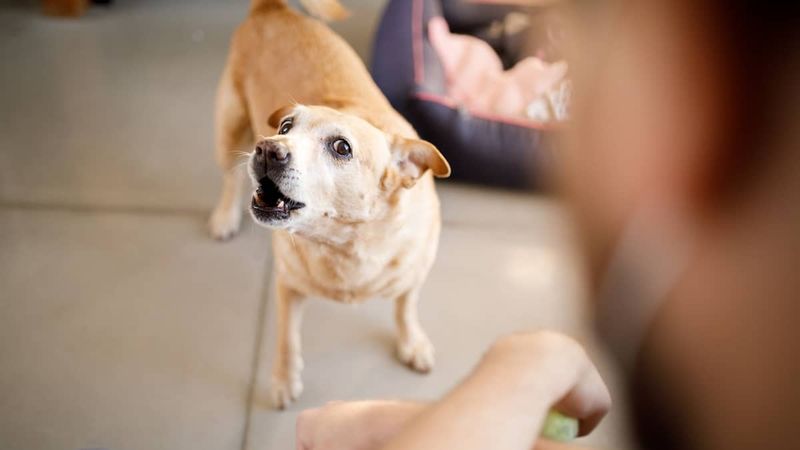
Forcing eye contact is intimidating for dogs and can be perceived as threatening. It may lead to fear or aggression. Instead, encourage natural eye contact through positive interactions. Reward them when they look at you voluntarily, fostering trust and communication. This method strengthens the bond and encourages a loving relationship. Building trust through gentle and respectful methods ensures a happier and more secure pet.
Shouting Commands

Shouting commands is ineffective and stressful for dogs. It creates confusion and anxiety instead of obedience. Dogs respond better to calm, consistent communication. Use a gentle voice and clear signals to guide them. Reinforce good behavior with rewards like treats and praise. This method promotes understanding and creates a peaceful learning environment. A positive approach leads to a well-behaved and content companion.
Short Tethering
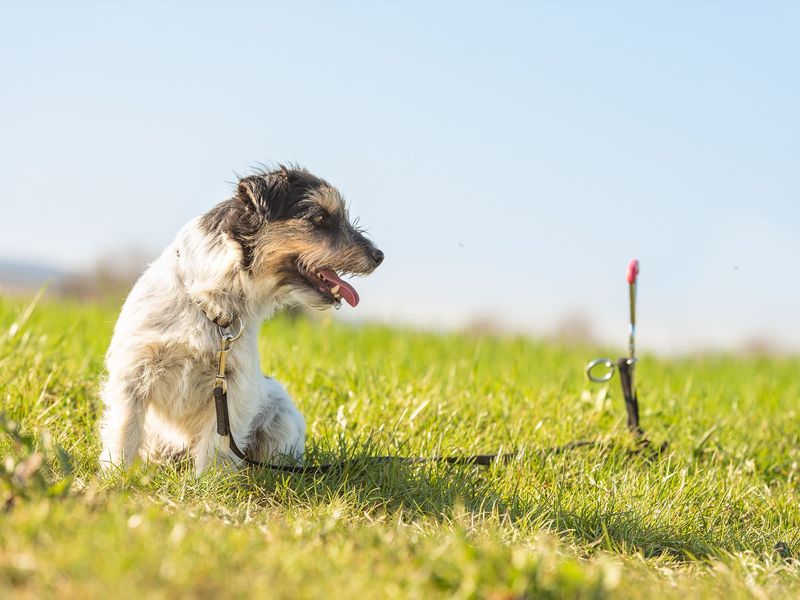
Short tethering confines a dog’s movement drastically, causing frustration and stress. Dogs need space to move freely and explore their environment. Instead, ensure they have a safe, spacious area for exercise and play. Provide regular walks and interactive activities to meet their physical and mental needs. This approach supports their well-being and reduces behavioral issues. Ensuring freedom to explore positively impacts their happiness and health.
Spanking

Spanking is a misguided disciplinary method that causes physical pain and fear. It damages trust and can lead to aggression or anxiety. Dogs learn best through love and positive reinforcement. Encourage good behavior with praise and treats, fostering a supportive and safe environment. Training should be about building trust and mutual respect. A loving approach enhances their well-being and strengthens the human-animal bond, leading to a well-adjusted and happy pet.

